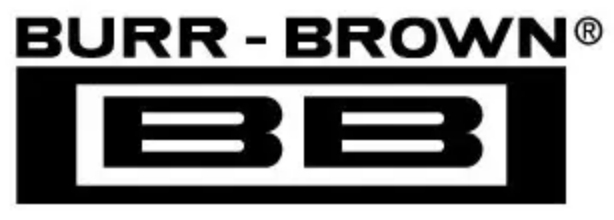THEORY OF OPERATION
Refer to the figure on the first page. For 0 to 5V output with
4–20mA input, the required transimpedance of the circuit is:
V
OUT
/I
IN
= 5V/16mA = 0.3125V/mA.
To achieve the desired output (0V for 4mA and 5V for
20mA), the output of the amplifier must be offset by an
amount:
V
OS
= –(4mA)(0.3125V/mA) = –1.25V.
The input current signal is connected to either +In or –In,
depending on the polarity of the signal, and returned to
ground through the center tap, C
T
. The balanced input—two
matched 75Ω sense resistors, R
S
—provides maximum rejec-
tion of common-mode voltage signals on C
T
and true differ-
ential current-to-voltage conversion. The sense resistors
convert the input current signal into a proportional voltage,
which is amplified by the differential amplifier. The voltage
gain of the amplifier is:
A
D
= 5V/(16mA)(75Ω) = 4.1667V/V.
The tee network in the feedback path of the amplifier
provides a summing junction used to generate the required
–1.25V offset voltage. The input resistor network provides
high-input impedance and attenuates common-mode input
voltages to levels suitable for the operational amplifier’s
common-mode signal capabilities.
BASIC POWER SUPPLY
AND SIGNAL CONNECTIONS
Figure 1 shows the proper connections for power supply and
signal. Both supplies should be decoupled with 1µF tanta-
lum capacitors as close to the amplifier as possible. To avoid
gain and CMR errors introduced by the external circuit,
connect grounds as indicated, being sure to minimize ground
resistance. The input signal should be connected to either
+In or –In, depending on its polarity, and returned to ground
through the center tap, C
T
. The output of the voltage refer-
ence, Ref Out, should be connected to Ref In for the
necessary level shifting. If the Ref In pin is not used for level
shifting, then it must be grounded to maintain high CMR.
GAIN AND OFFSET ADJUSTMENT
Figure 2 shows the circuit for adjusting the RCV420 gain.
Increasing the gain of the RCV420 is accomplished by
inserting a small resistor in the feedback path of the ampli-
fier. Increasing the gain using this technique results in CMR
degradation, and therefore, gain adjustments should be kept
as small as possible. For example, a 1% increase in gain is
typically realized with a 125Ω resistor, which degrades
CMR by about 6dB.
A decrease in gain can be achieved by placing matched
resistors in parallel with the sense resistors, also shown in
Figure 2. The adjusted gain is given by the following
expression
V
OUT
/I
IN
= 0.3125
x
R
X
/(R
X
+ R
S
).
A 1% decrease in gain can be achieved with a 7.5kΩ
resistor. It is important to match the parallel resistance on
each sense resistor to maintain high CMR. The TCR mis-
match between the two external resistors will effect gain
error drift and CMR drift.
There are two methods for nulling the RCV420 output offset
voltage. The first method applies to applications using the
internal 10V reference for level shifting. For these applica-
–In
C
T
+In
10kΩ
(1)
10kΩ
(1)
R
X
R
X
1
2
3
15
200Ω
(1)
RCV420
14
R
1
±0.5% Gain
Adjustment
Rcv Out
NOTE: (1) Typical values. See text.
FIGURE 2. Optional Gain Adjustment.
I
IN
4–20mA
12
+In
C
T
3
15
2
R
S
R
S
–In
1
+10V
Reference
75Ω
RCV420
75Ω
14
11
10
8
7
Ref In
Rcv f
B
Rcv Out
Ref Out
Ref f
B
Ref Trim
Ref Noise Reduction
V
O
(0–5V)
V+
1µF
16
1µF
4
V–
13
Rcv Com
5
Ref Com
FIGURE 1. Basic Power Supply and Signal Connections.
®
5
RCV420

 BURR-BROWN [ BURR-BROWN CORPORATION ]
BURR-BROWN [ BURR-BROWN CORPORATION ]